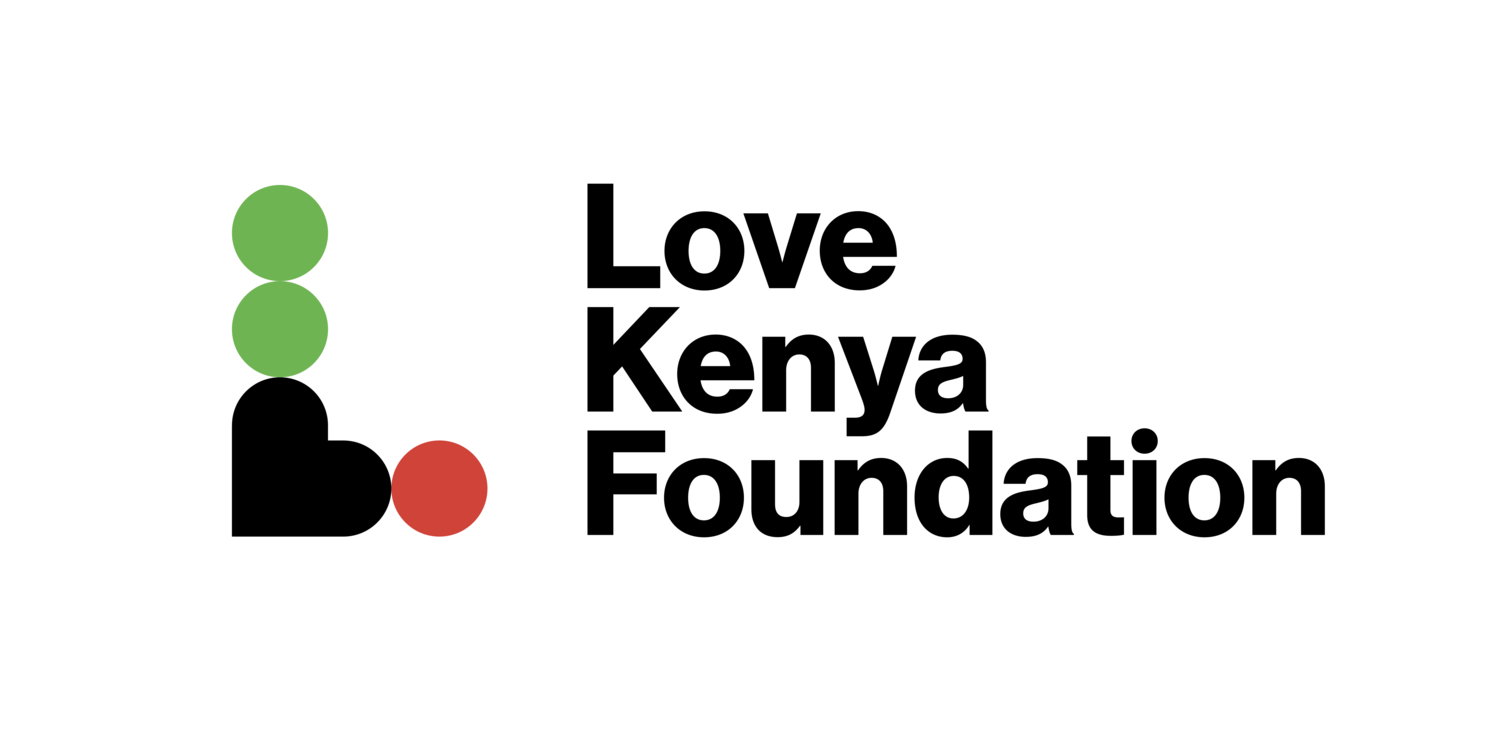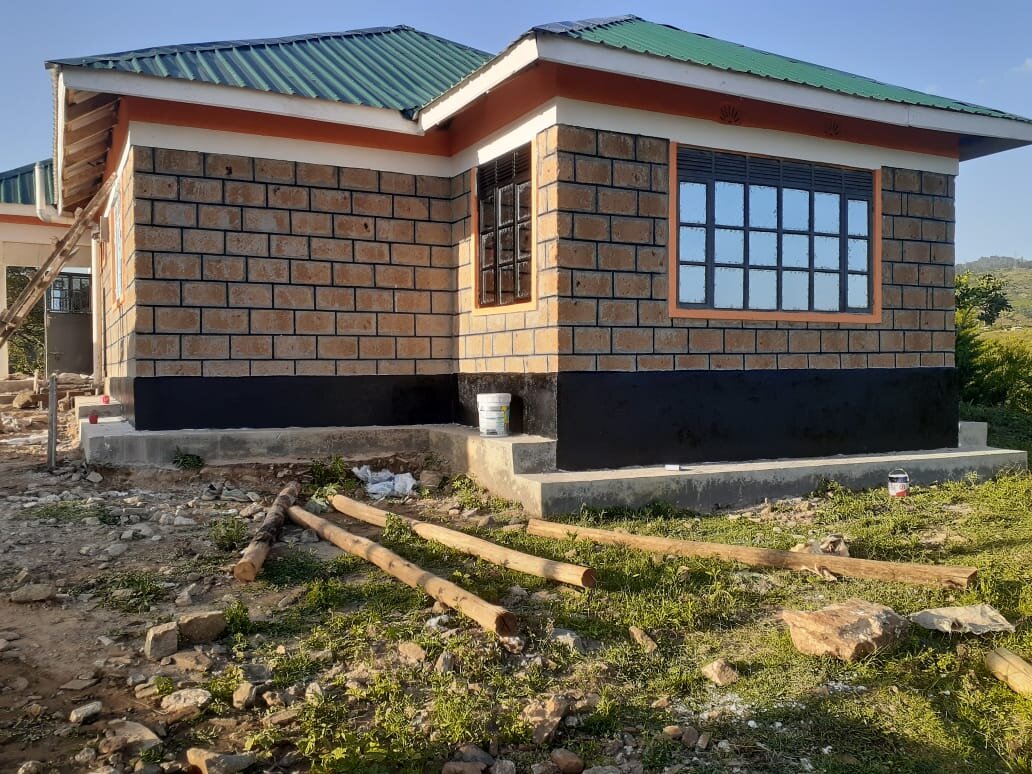Update on Garden of Hope; Our Children's Rescue Center
/As we turn a corner in time and enter a new year, we feel optimistic about the future and gratitude toward our donors and partners who make our work possible. We want to take a moment to share a progress update on the construction of Garden of Hope, our children’s rescue center in Kenya.
If you’ve followed our social media accounts or our email newsletters you’re probably aware of the delays COVID-19 caused to our construction plans. Many months of 2020 were filled with challenges and setbacks to the plans. There’s good news though! Although COVID continues to be an issue, we’re back on track and nearing completion of construction.
Background of Garden of Hope
When we first began working in the region of Nandi County located in the Great Rift Valley of Kenya, our mission and vision were to provide support and help to women and children who live in conditions of extreme poverty. There are a couple of ways to measure levels of poverty. The World Bank defines poverty according to income. By the World Bank’s measure, “extreme poverty” is where a person is living on less than $1.90 per day. Of course, in wealthier countries, extreme poverty has been eradicated and so these countries have a different definition as to what constitutes living in poverty. The UN defines poverty by a measure of income and access to services. The UN has defined 4 different levels of poverty, with extreme poverty, abject poverty, or destitution being the most severe, where conditions are characterized by deprivation of basic human needs, including food, shelter, water, sanitation, education and medical care.
When we began working in Nandi County, our focus immediately fell on the children we met who live in extreme poverty. We have many, many stories of the children we met during our scouting missions. Some lived on the streets, addicted to sniffing glue and surviving by borrowing, begging, and stealing. Others lived with an elderly grandparent, under the care of an older sibling or with a single mother. Initially, when we saw kids running around barefooted, it seemed appalling and harsh but quickly as we met kids from quite difficult circumstances we came to realize that lack of shoes is actually not that difficult, compared to others who survive with so little that it’s hard to comprehend.
We organized meetings with local officials and leaders, including the regional Chiefs and Assistant Chiefs, village elders, social workers from Kenyan Social Services, members of the County Health Office, and we even met with the Governor of Nandi County, Steven Sang. Our goal through these meetings was to fully understand the needs of the region and to discuss if and how we can help. Meanwhile, we were sponsoring street children and orphans who were brought to our attention. By sponsoring these kids, it meant that they had access to food, shelter, clothing, medicine and education. After several months of planning and meeting, it was determined that we would build and open a children’s rescue center.
What is a Children’s Rescue Center?
It is estimated that there are currently 3 million orphaned and vulnerable children in Kenya. The best place for a child to be raised and to grow up is in a home and family environment. In some cases, this is not possible. Historically, orphanages were opened up and children were raised in an orphanage if needed. However, the Kenyan government has changed its philosophy and no longer supports or allows new orphanages to open. Instead, they encourage utilizing rescue centers. A rescue center is a hybrid of an orphanage and foster care; children are brought into the rescue center to receive immediate attention and care. While living in the rescue center, a long-term foster family is identified and once the child is stabilized they’ll move into the care of the foster family.
Garden of Hope - Our Children’s Rescue Center
Once it was decided that we would focus on building a rescue center, we began the task of identifying and purchasing land for the home. This was no small task as the land needed to meet several criteria, including cost, access to water, proximity to schools and medical centers and it needed to be accessible to us as well, so on or near a paved road. After several months of searching and visiting prospective parcels of land, we purchased 3 acres in Chepsangor.
Our land in Chepsangor, Kenya where Garden of Hope is being built
From there, architectural drawings were drafted and approved and construction began. The home is a 3 bedroom home with an indoor and outdoor kitchen. It also has indoor and outdoor toilets. This is customary for such homes in Kenya. Much of the cooking is done using charcoal and firewood which is best done in an outdoor kitchen, keeping the smoke away from the living areas of the home. Garden of Hope will be equipped with solar panels for electricity and utilizes a nearby spring as a water source. We’re also planning for rainwater collection to help with the irrigation of a future garden. We also installed a biodigestor which is a system that contains three underground chambers to treat waste without the need for cleaning or emptying. Advantages of using the biodigestor included the elimination of odors, no maintenence required and we can use the filtered water from the final tank to irrigate the fruit trees on site.
Current Status
At this point, our team is painting the interior of the home, installing fixtures (doors, lights, plumbing fixtures, etc). We are preparing to purchase the furnishings of the home and have started the landscaping. We have planted 20 banana trees and plan to include avocado, mango, papaya and guava trees as well. We also need to build a safety fence around a portion of the property to protect the kids from a steep escapement.
We anticipate opening the home very soon! Once the home is operational, a matron or caregiver will live in the home with the children who come into our care. We’ve partnered with the local school, so the children will receive an education while in our care. We plan to have around 8-10 children living in the home at any given time and expect that they’ll stay at Garden of Hope for 6-12 months, which is the time it will take us to find a foster family for each child.
On an ongoing basis, we’ll need to purchase food for the children and provide for their other needs. We’ll also pay the salaries of the matron and the on-site watchman. We’ll employ a part-time gardener to help us to grow food for the home and have future plans to build a chicken coop, purchase a few goats and a dairy cow and to expand the home.
If you’d like to support this project, please donate here. If you have any questions, don’t hesitate to contact us! And for those of you who support our work, THANK YOU!
Neighbor children, coming to watch the construction of the home
One of the neighbor girls, stopping to say hi to us as she passed by the construction site
This grandfather cares for his 5 grandchildren. He has health issues and struggles to provide for them - social services linked us to this family, who receives support for the children’s schooling, food and other needs.
The community of Chepsangor hosted a ‘welcoming celebration’ for the Love Kenya Team. We planted a tree in commemoration of the ceremony.
A neighbor ‘mzee’ or grandfather, who comes to sit under the tree and observe the construction progress
Views from the home site - the region is quite mountainous and very beautiful.
These boys were thrilled to receive soap and tooth brushes!
An impromptu meeting with the land surveyors to review the property boundaries before the purchase was finalized
This woman works within the local social services -here we were spending a few days meeting street children and interviewing them to better understand their background and circumstances.
Street children commonly are addicted to sniffing glue. It is a difficult reality of their situation, however helps them to not feel hunger or cold. It is quite addictive so there are many challenges when supporting these children.
January 2021 - the exterior of the home is nearly complete. We need to tidy up the landscaping as we complete the interior.
A view of one of the bedrooms inside the home
A painter, hard at work
October 2020 - the beginnings of the outdoor kitchen
Members of the office of Kenya’s Children’s Department and local social services visit the site for an inspection
Wanyama (center, in blue) from the National Government Children’s Office visits the site
November 2020; the unfinished inside kitchen
September 2020: the floor is set for the outdoor kitchen
Before the cement floor is in place, the ground is made level with stones set to keep the ground firm and stable. All work is done by hand - very little machinery was used in the construction of the home.
This is an example of the type of stove we’ll install in the outdoor kitchen. It allows for cooking with charcoal and firewood and retains heat for hours to keep the food warm.
November 2020: the front of the home
Meeting with county officials to understand the needs of the community
On the left is world champion marathoner, Abel Kirui. He has supported our work and connected us to trustworthy and reliable partners. Center of the photo is Steven Sang, Governor of Nandi County.











































